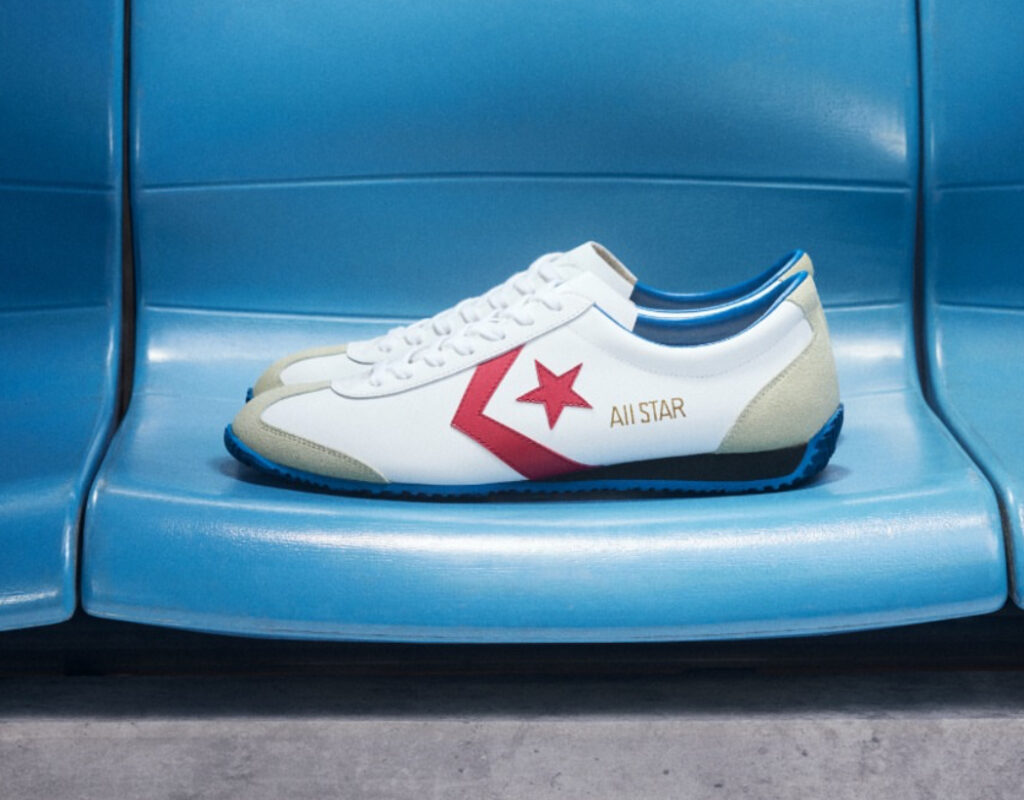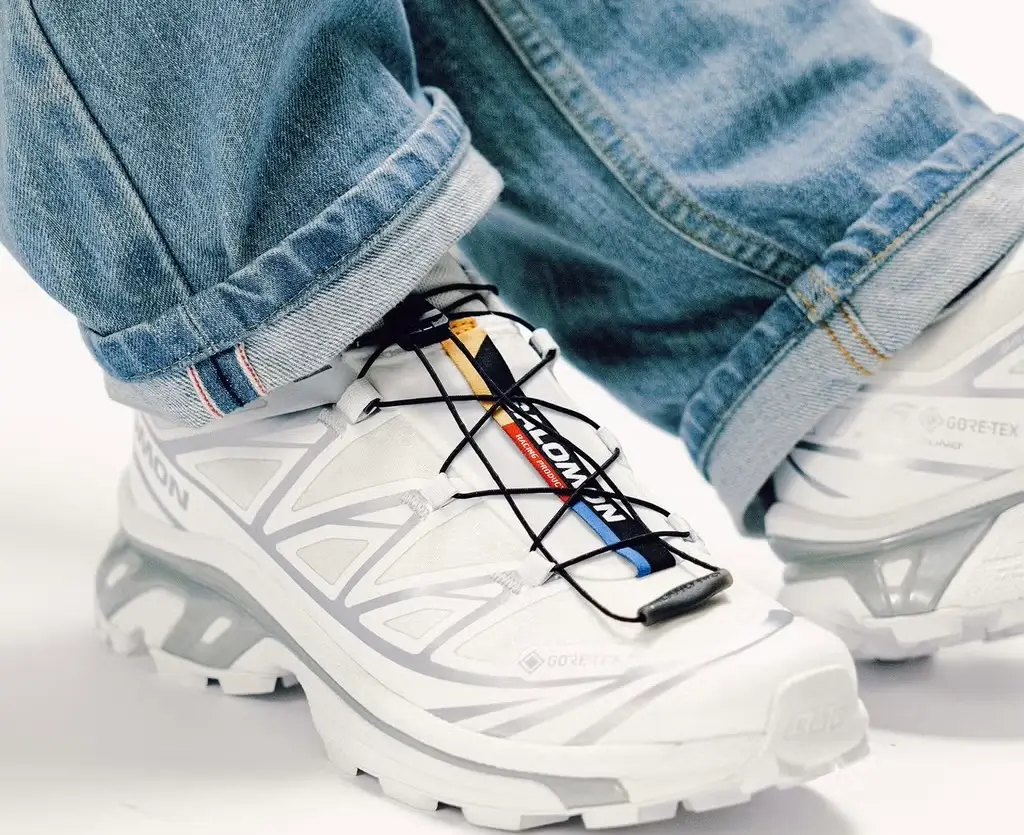The shoe, once a democratic object of performance and protest, has in recent years grown fat on its own hype. Inflated soles. Loud palettes. Collaborations as currency. But every now and then, a silhouette appears that feels like a whispered interruption—something that erases rather than adds, that flattens rather than inflates. Converse, the century-old brand so often pigeonholed into its Chuck Taylor mythology, has done just that: introduced a runner so flat it nearly vanishes, and so luxurious in material restraint it might pass for something that walked off the Prada runway.
It’s not just a shoe. It’s an argument.
A Geometry of Stillness
This new Converse silhouette, unnamed at the time of writing, is a ghost of a shoe. Its flattened profile contradicts every trend currently dominating sneaker design. There is no visible cushioning, no bubble air pocket, no aggressive arch or molded curve to suggest speed. Instead, it lies dormant—geometrically spare, architecturally horizontal, and spiritually closer to a Japanese zori sandal or a 1960s Olympic spike than any performance runner of the past decade.
The sole, which appears more sculpted than engineered, is paper-thin but sharply defined. The upper—wrapped in suede or smooth neoprene—evokes the tactility of luxury. Not the performative luxury of logos and branding, but the quiet kind: the kind you feel in the grain of leather on a Margiela loafer or the way a Prada nylon bag folds in your hand.
This shoe is not designed to chase performance metrics. It’s meant to exist.
The Prada Vibe: Not a Copy, but a Conceptual Echo
To mention Prada is not to accuse Converse of imitation. It is to acknowledge a conceptual overlap: the haute of negative space. Prada, under Miuccia’s direction, has long turned minimalism into a high art, proving that elegance often lives in things undone—in garments half-tailored, colors barely-there, silhouettes so simple they border on severe. This Converse runner channels that same discipline.
There’s something of the Luna Rossa DNA here: performance reframed through intellectual reduction. Where Prada’s boat shoes were built for water and runway alike, this Converse seems built for future ruins and museum vitrines. One imagines it on the feet of dancers. Or monks. Or digital avatars.
A Cultural Rejection of Loudness
What this sneaker represents, above all, is an aesthetic refusal. A rebellion against bloat, both physical and cultural. For years, shoes have functioned as portable billboards for self-image and algorithmic signaling. Their soles have grown taller. Their panels more frenetic. Their narratives more desperate for virality.
This Converse shoe—silent, unbranded, almost invisible—reads like a protest against all of it.
If the Nike Zoom Vomero 5 was normcore rebranded as cultwear, and if the Balenciaga Track was dystopia rendered wearable, then this is pure subtraction. This is silence in a room full of shouting. This is bespoke boiled down to the curve of a toe and the absence of ego.
Material as Message
Much of the shoe’s power comes from its materials—though no press release was issued, one can infer high-grade suede, uncoated canvas, and soft synthetics engineered for feel over function. There’s no mesh for breathability. No glossy synthetics for optics. Even the stitching, where visible, appears deliberate and minimal—recalling hand-sewn espadrilles or vintage martial arts shoes.
The colorways lean toward the monastic: matte black, soft gray, maybe a wheat-toned tan. Shades not meant for the feed, but for the foot.
And that foot? It disappears. The shoe doesn’t so much elevate the wearer as erase them. This is footwear that flattens the ego, grounds the body, and defers attention.
A Tabi in Converse Clothing
Some comparisons are inevitable. Maison Margiela’s Tabi boot—iconic for its split toe and eerie footprint—is a spiritual cousin here. Not because of direct visual similarity (though one might detect a gentle toe divide), but because both shoes insist on being felt rather than flaunted.
Like the Tabi, this Converse runner may be divisive. Too strange for some. Too quiet for others. But for a growing subculture of wearers—those interested in the intersection of performance, anonymity, and elegance—it might just be perfect.
Footwear as Fictional Architecture
The design language here moves beyond fashion and into fiction. One might imagine this shoe in a sci-fi novella—worn by utopian citizens in a gravity-neutral city. Or in a modern dance performance choreographed to silence, where the shoes slide across a resin floor like shadows.
There is no “drop” energy here. No wristbands or Discord groups. Just an object, fully realized in its refusal to compete.
Converse: An Unexpected Disruptor
That such a thing would come from Converse—a brand often relegated to nostalgic Americana—is perhaps the most subversive element of all. Known globally for the Chuck Taylor and the One Star, Converse has historically leaned into its roots rather than pushing forward. But over the past few years, its design studio has begun quietly experimenting—reworking basketball shoes, collaborating with avant-garde artists, and dabbling in brutalist aesthetics.
This runner may mark its most radical departure yet. A rejection of heritage. A leap into abstraction. A shoe that redefines Converse not as a retro brand, but as a platform for speculative design.
Final Thought: The Luxury of Less
In an age of excess, the hardest thing to do is make something disappear. To design an object that contains its own silence. This new Converse runner—flat as a pancake, luxe as a Prada coat—does exactly that. It steps away from the conversation. It refuses the runway, the resale site, the clout economy. It simply is.
And in doing so, it becomes more than a sneaker.
It becomes a thesis.
No comments yet.









